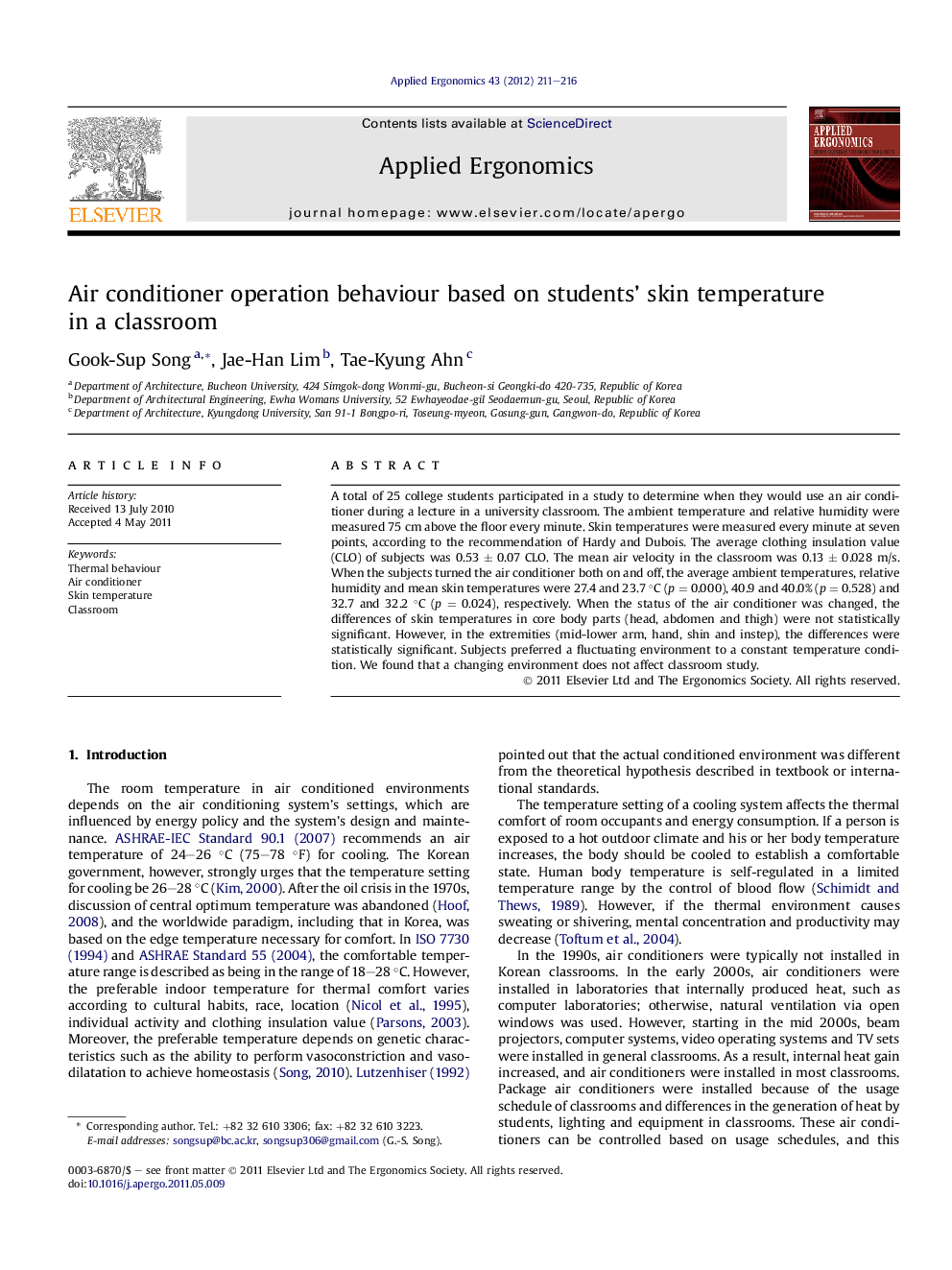| Article ID | Journal | Published Year | Pages | File Type |
|---|---|---|---|---|
| 10366027 | Applied Ergonomics | 2012 | 6 Pages |
Abstract
A total of 25 college students participated in a study to determine when they would use an air conditioner during a lecture in a university classroom. The ambient temperature and relative humidity were measured 75 cm above the floor every minute. Skin temperatures were measured every minute at seven points, according to the recommendation of Hardy and Dubois. The average clothing insulation value (CLO) of subjects was 0.53 ± 0.07 CLO. The mean air velocity in the classroom was 0.13 ± 0.028 m/s. When the subjects turned the air conditioner both on and off, the average ambient temperatures, relative humidity and mean skin temperatures were 27.4 and 23.7 °C (p = 0.000), 40.9 and 40.0% (p = 0.528) and 32.7 and 32.2 °C (p = 0.024), respectively. When the status of the air conditioner was changed, the differences of skin temperatures in core body parts (head, abdomen and thigh) were not statistically significant. However, in the extremities (mid-lower arm, hand, shin and instep), the differences were statistically significant. Subjects preferred a fluctuating environment to a constant temperature condition. We found that a changing environment does not affect classroom study.
Related Topics
Physical Sciences and Engineering
Computer Science
Human-Computer Interaction
Authors
Gook-Sup Song, Jae-Han Lim, Tae-Kyung Ahn,
